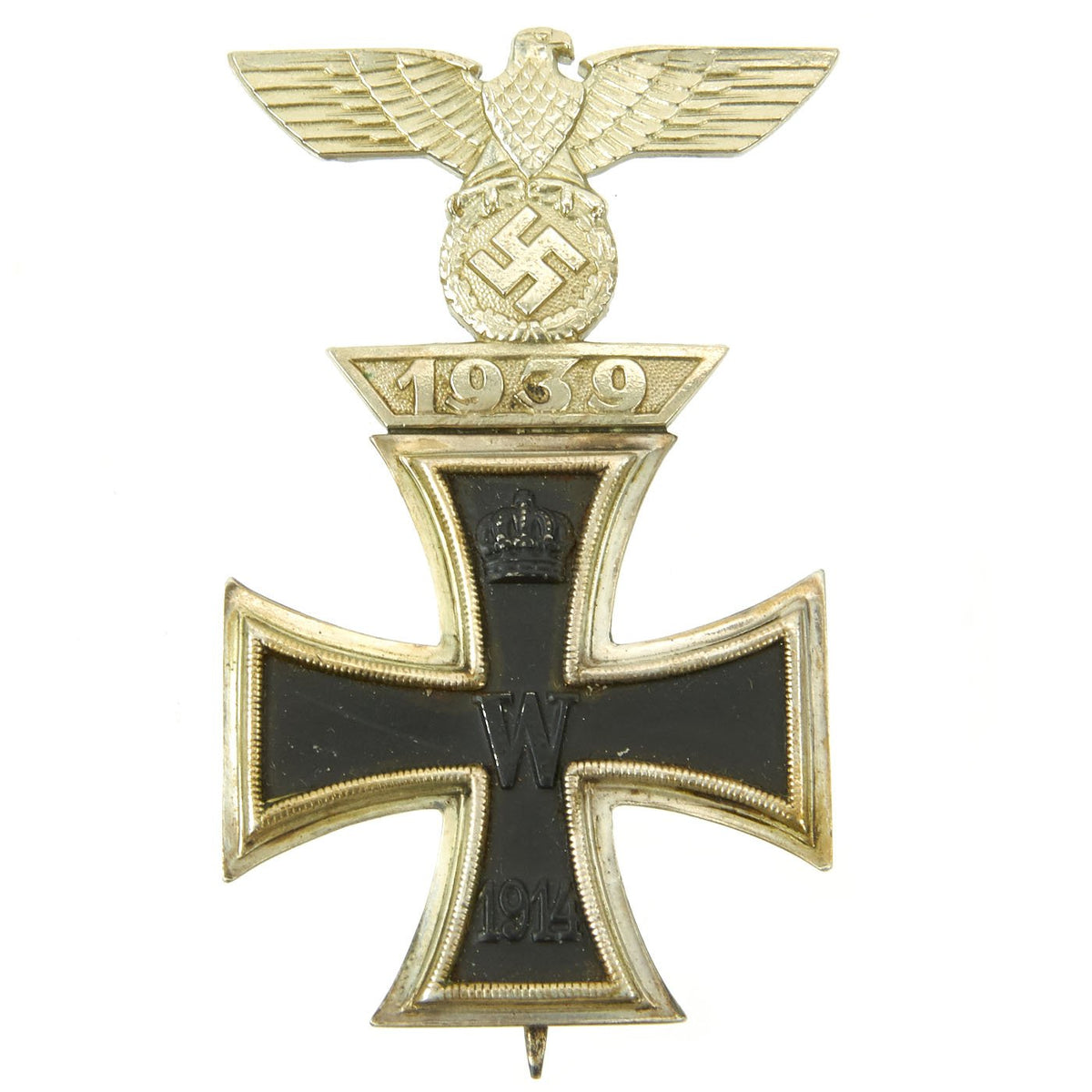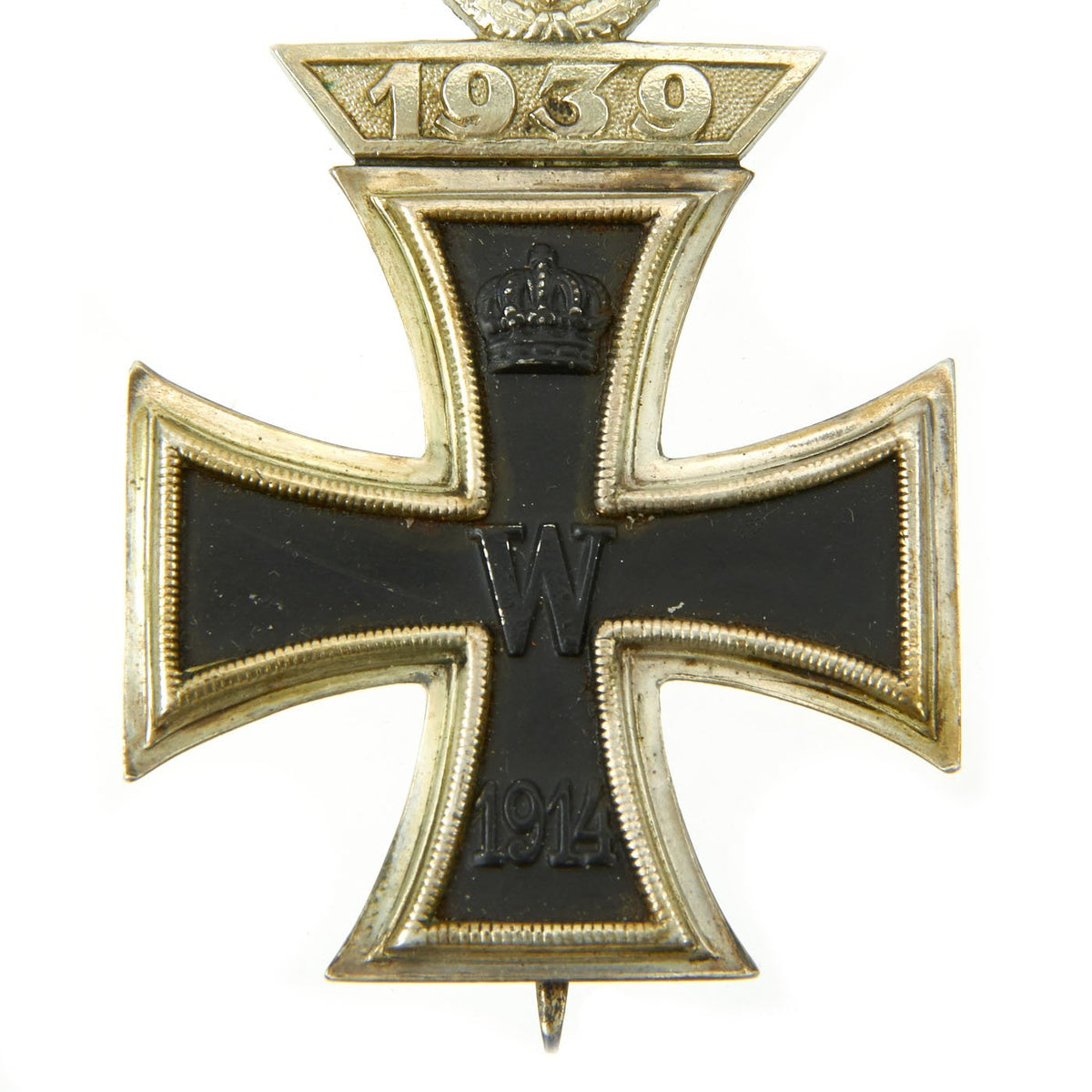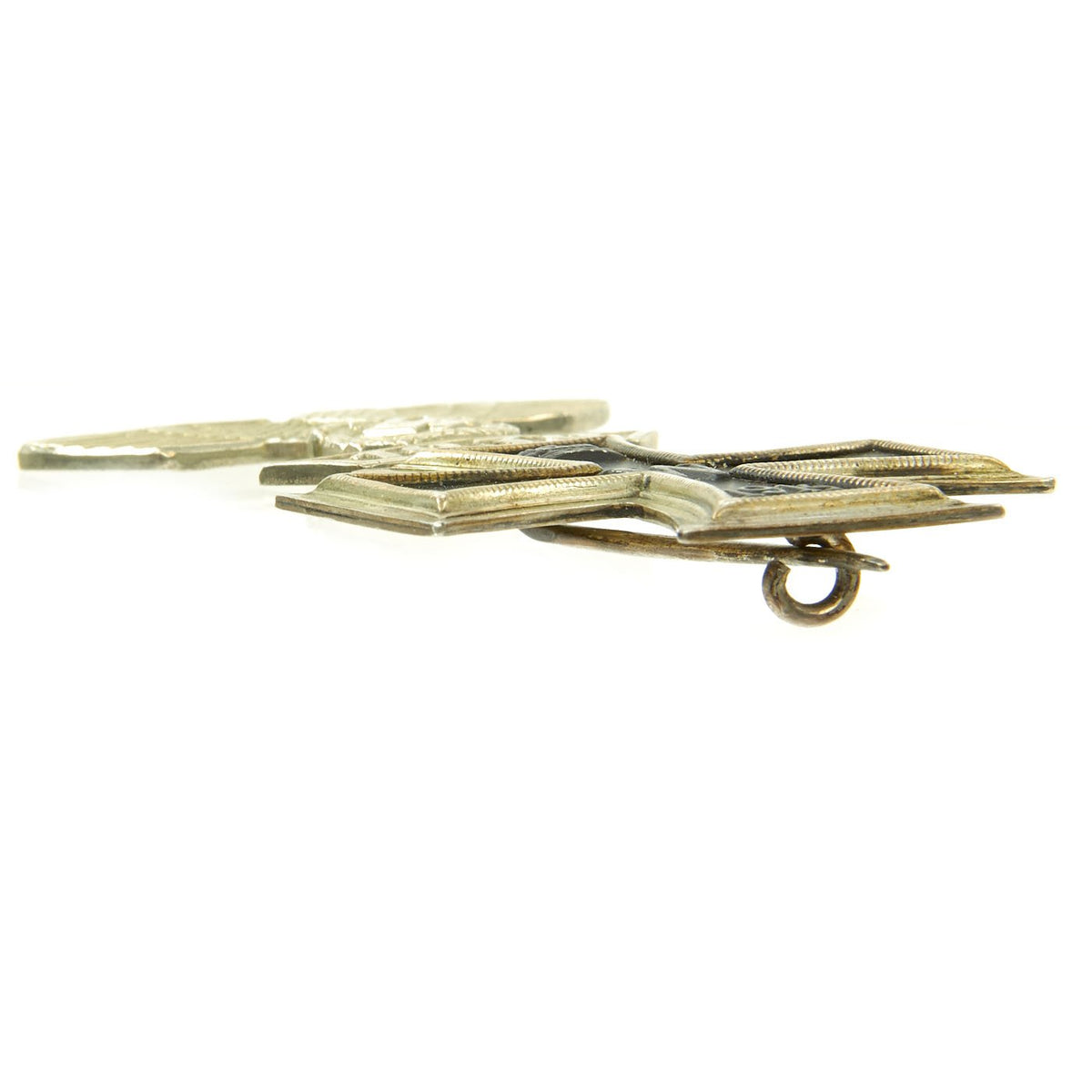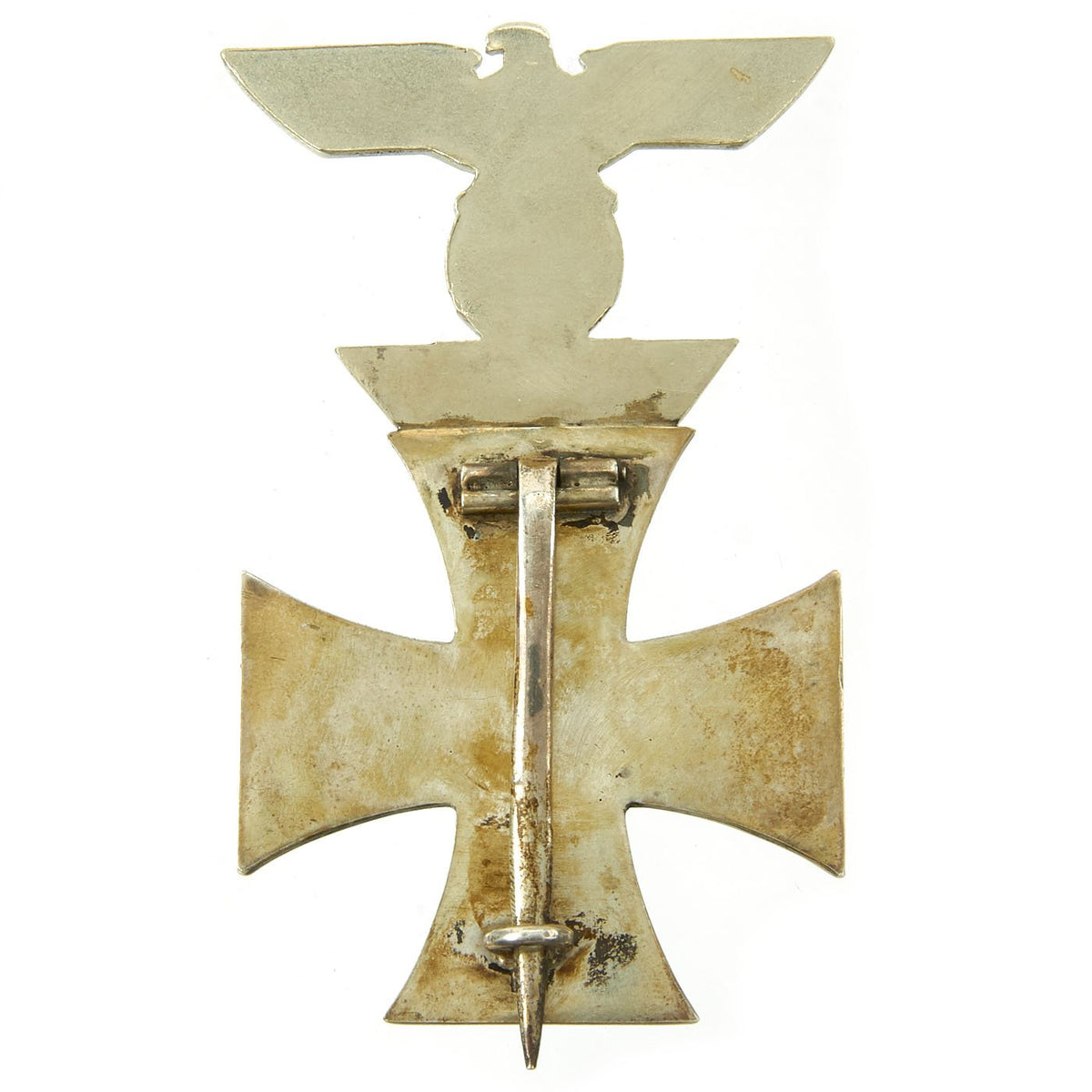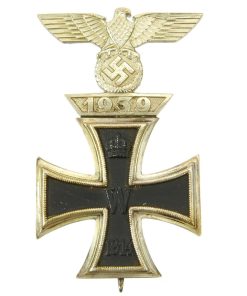Original German WWI Prussian Iron Cross 1st Class 1914 with 1st Class 1939 Spange – Marked KO Original Items
$ 495,00 $ 148,50
Original Item: Only One Available. Established by Frederick William in 1813 for gallantry in action, the Iron Cross (Eisernes Kreuz, abbreviated EK) was revived several times for later conflicts. The bulk of the issues are divided into 1st and 2nd class versions, but a rare and superior ‘Grand Cross’ was also awarded for successful field commanders. During WW1 the lower decoration was freely awarded, with 5½ million second class types issued. Originally, the Iron Cross was an award of the Kingdom of Prussia, however given Prussia’s pre-eminent place in the German Empire formed in 1871, it became an award for all of Germany.
The basic design of the WW1 crosses is a central cross patee struck from iron and mounted in a silver frame which has a raised crenulated decorative border. The obverse of the cross bears the date 1914 under a crowned W monogram. Second class crosses would have a ring at the top where a ring was attached, and had more markings on the back. The first class award, however, was meant to attach directly to the front of the uniform, and this example has a double barrel hinge, a soldered catch, and a securing pin. This pin is quite long, extending past the end of the cross. The lower leg of the cross is stamped KO, which signifies it was made by Königliches Münzamt Orden (the Royal Mint), in Berlin.
Please note the edge seam for authentication, which is not present on reproductions. Iron crosses were commonly constructed from an iron core sandwiched in a surrounding two part silver frame, normally the seam of these two silver parts is visible around the edge of the cross as is seen on this fine example. This example is a “flat’ style Iron Cross. Others could be quite “Vaulted” in shape. The silver has a great aged patina, and the painted central area is still clear.
With so many Iron Crosses issued in WWI, it was inevitable that soldiers who already had achieved the 1914 version of the award might receive another during WWII. When the 1939 Iron Cross began being issued, they also introduced the Clasp to the Iron Cross (Spange zum Eisernen Kreuz). This way, a holder of the 1914 Iron Cross could be awarded a second or higher grade of the 1939 Iron Cross. To permit the two medals to be worn together, a “1939 Clasp” (Spange) would be worn on the original 1914 Iron Cross. It depicted a national eagle clutching an oak leaf wreath surrounding a swas above a trapezoid bearing the year 1939.
The first class example of the Spange (SPI) would be worn directly above the 1914 iron cross on the uniform. To make a cleaner appearance, many of the clasps were brazed directly to the top of the EKI, as this example has been. It does look quite nice, though we are unable to confirm whether this was added during war time, or whether it was added post war.
This is a fantastic chance to own a solid period example of the most iconic of all Imperial German awards.
Fast Shipping with Professional Packaging
Thanks to our longstanding association with UPS FedEx DHL, and other major international carriers, we are able to provide a range of shipping options. Our warehouse staff is expertly trained and will wrap your products according to our exact and precise specifications. Prior to shipping, your goods will be thoroughly examined and securely secured. We ship to thousands clients each day across multiple countries. This shows how we're dedicated to be the largest retailer on the internet. Warehouses and distribution centres can be located throughout Europe as well as the USA.
Note: Orders with more than one item will be assigned a processing date depending on the item.
Before shipping before shipping, we'll conduct a thorough inspection of the items you have ordered. Today, the majority of orders will be delivered within 48 hours. The delivery time will be between 3-7 days.
Returns
The stock is dynamic and we cannot completely manage it because multiple stakeholders are involved, including our factory and warehouse. So the actual stock may alter at any time. It's possible that you may not receive your order once the order has been made.
Our policy is valid for a period of 30 days. If you don't receive the product within 30 days, we are not able to issue a refund or an exchange.
You can only return an item if it is unused and in the same state as the day you received it. You must have the item in its original packaging.
Related products
Uncategorized
Uncategorized
Uncategorized
Uncategorized
Uncategorized
Band of Brothers ORIGINAL GERMAN WWII Le. F.H. 18 10.5cm ARTILLERY PIECE Original Items
Uncategorized
Uncategorized
Uncategorized
Uncategorized
Angolan Rebel 1970s era 60mm Inert Display Mortar from Angolan Civil War Original Items
Uncategorized
Uncategorized
Uncategorized
Uncategorized
Uncategorized
Uncategorized
Armored Burgonet Helmet & Polearm from Scottish Castle Leith Hall Circa 1700 Original Items
Uncategorized
Uncategorized
Uncategorized
Armoured Fighting Vehicles of the World: AFVs of World War One (Hardcover Book) New Made Items
